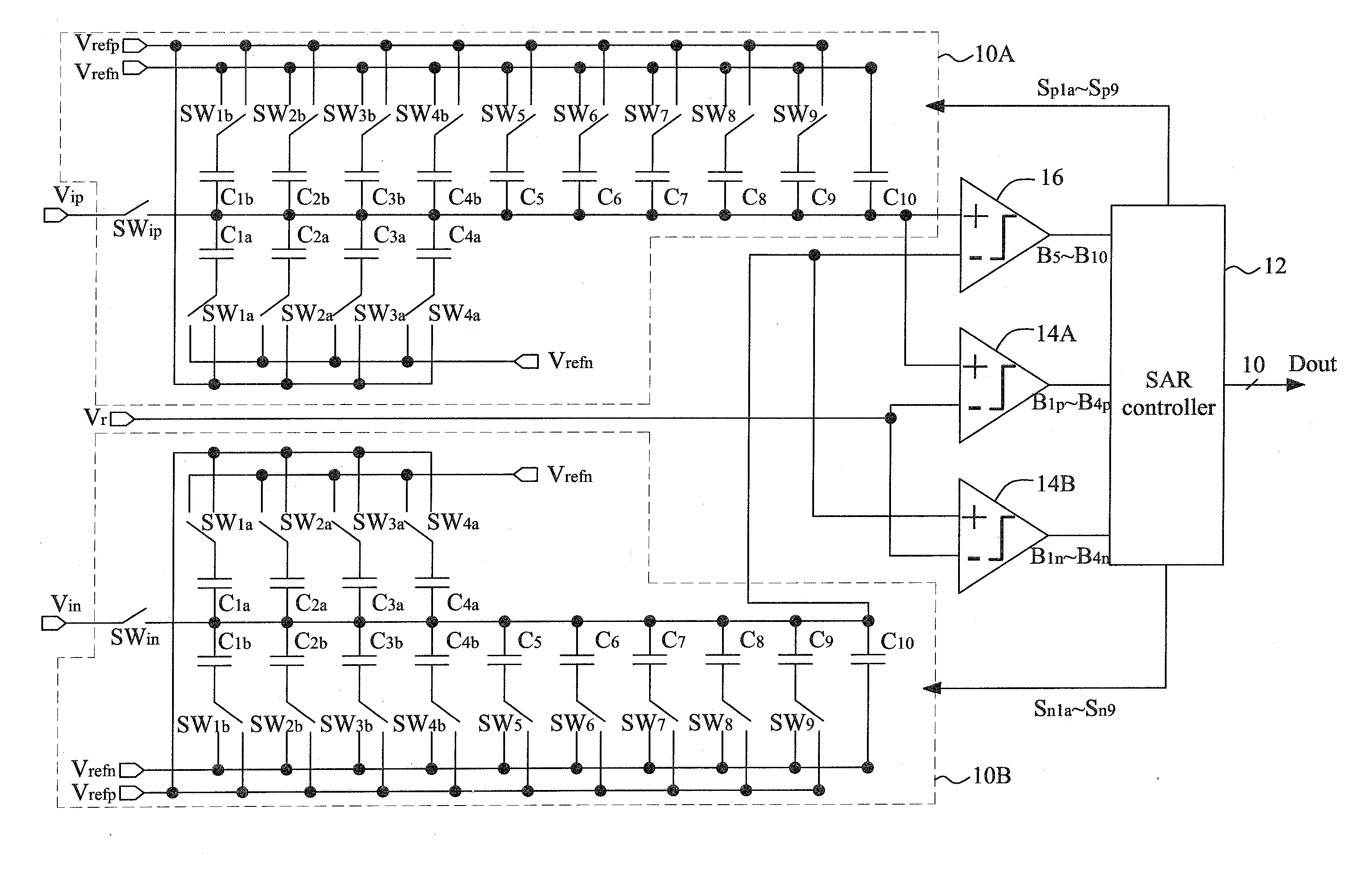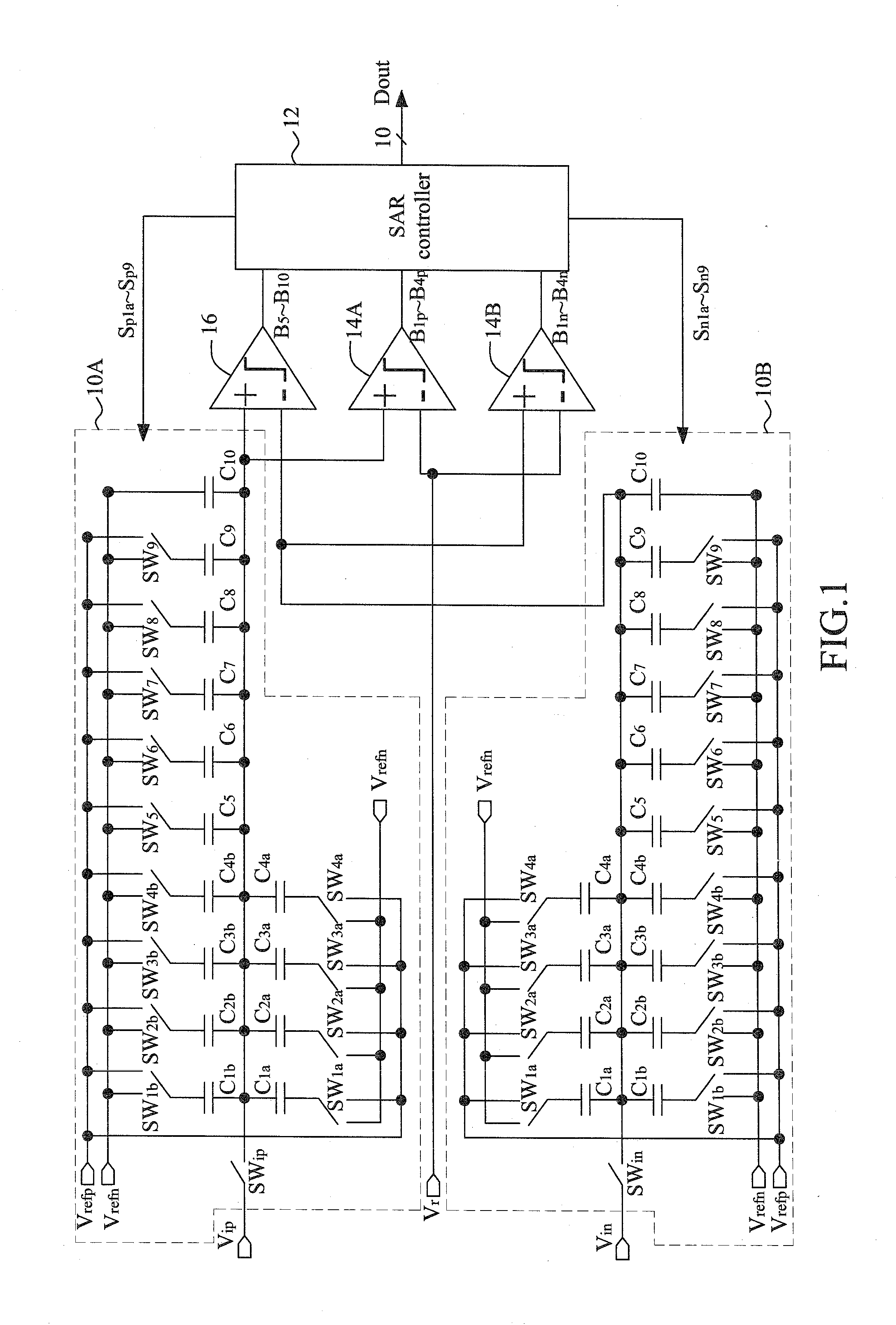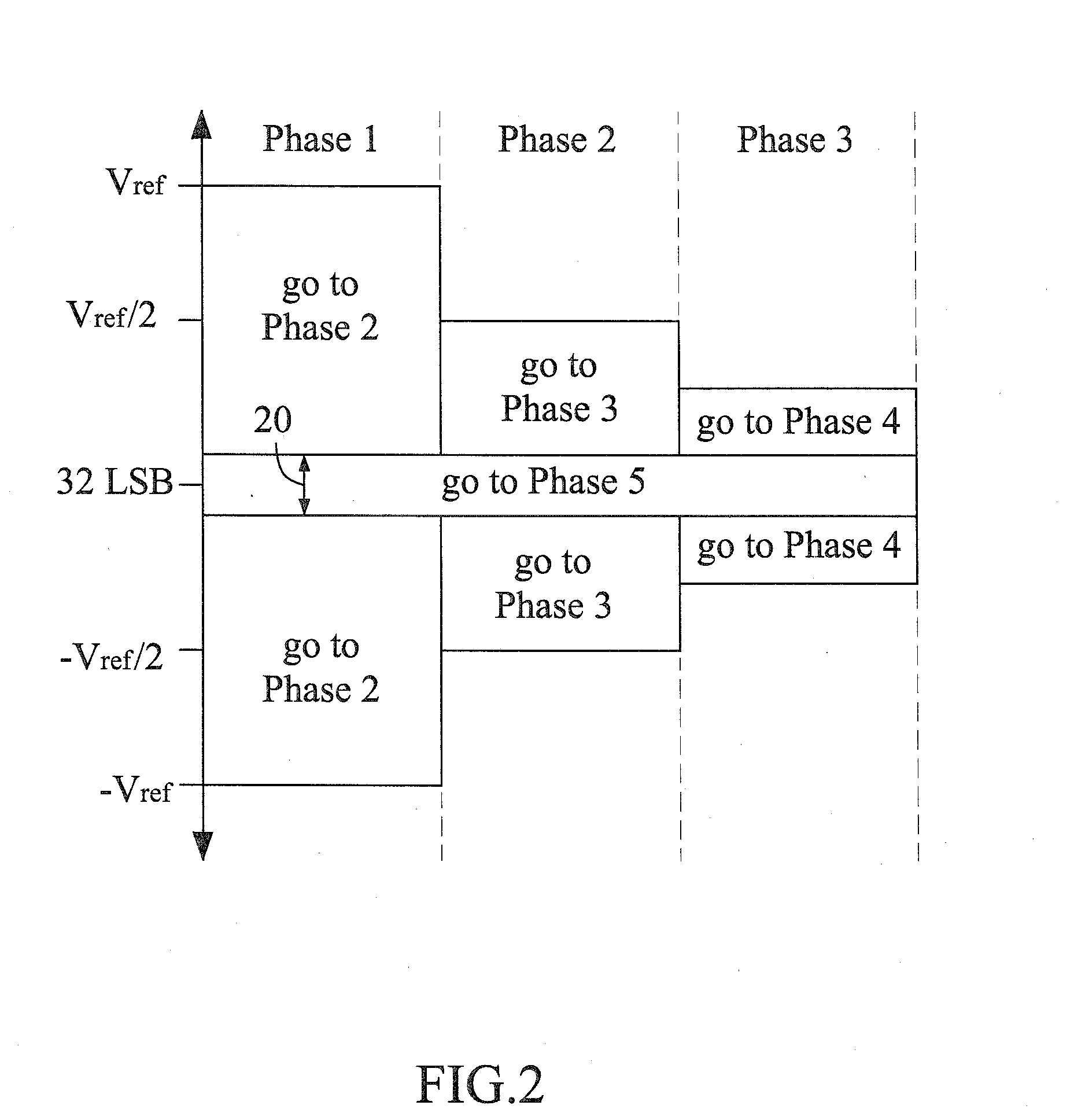Successive approximation register ADC with a window predictive function
a predictive function and approximation register technology, applied in the field of successful approximation register (sar) analogtodigital converters, can solve the problems of inability to meet high-speed applications, cost of linearity, and need more cycles of sar adc, so as to improve linearity, speed up operation, and reduce power consumption
- Summary
- Abstract
- Description
- Claims
- Application Information
AI Technical Summary
Benefits of technology
Problems solved by technology
Method used
Image
Examples
Embodiment Construction
[0020]FIG. 1 shows a circuit diagram illustrative of a successive approximation register (SAR) analog-to-digital converter (ADC) with a window predictive function according to one embodiment of the present invention. Although a 10-bit SAR ADC with a 5-bit predictive window is illustrated in the embodiment, an n-bit SAR ADC with an m-bit predictive window (m<n) may be generally constructed according to the present invention, where the m most significant bits (MSBs) of the SAR ADC correspond to the predictive window and other n-m bits correspond to least significant bits (LSBs).
[0021]In the embodiment, the SAR ADC includes a first capacitor digital-to-analog converter (DAC) 10A and a second capacitor DAC 10B that are coupled to receive a first input signal Vip and a second input signal Vin respectively. Specifically, the first capacitor DAC 10A includes an array of individually switched capacitors C1a to C10. Two capacitors are used for each of m−1 phases for obtaining the m MSBs (i.e...
PUM
 Login to View More
Login to View More Abstract
Description
Claims
Application Information
 Login to View More
Login to View More - R&D
- Intellectual Property
- Life Sciences
- Materials
- Tech Scout
- Unparalleled Data Quality
- Higher Quality Content
- 60% Fewer Hallucinations
Browse by: Latest US Patents, China's latest patents, Technical Efficacy Thesaurus, Application Domain, Technology Topic, Popular Technical Reports.
© 2025 PatSnap. All rights reserved.Legal|Privacy policy|Modern Slavery Act Transparency Statement|Sitemap|About US| Contact US: help@patsnap.com



